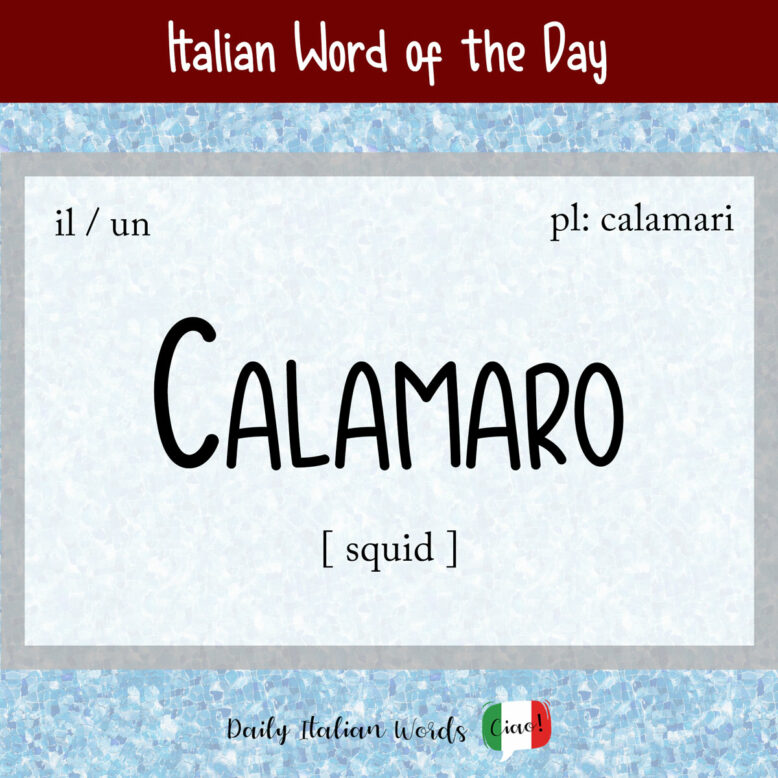The word for squid in Italian is the masculine noun calamaro. Technically speaking, calamaro is actually the term for the European squid but in everyday Italian, it has come to refer to the entire squid family.

If this word sounds familiar, that’s because in English, we use the plural form calamari to refer to squid served as food!
It has the same etymology as the word calamaio (inkwell), probably because the black ink emitted by squids when threatened resembles the black ink used to write letters in ancient times.
Il calamaro si nutre principalmente nelle ore notturne.
The squid eats primarily at night.

Squid are soft-bodied molluscs with eight arms (otto braccia), two tentacles (due tentacoli) and elongated bodies. Like their close relative the octopus (polpo), they are able to change colour (cambiare colore) for camouflage and signalling and, as mentioned above, also eject clouds of ink (inchiostro) to defend themselves from predators.
Another word for squid that you might encounter is totano (masculine, plural: totani). Although it specifically denotes the European flying squid, it is often translated simply as squid. Some other dialectal terms include:
- caamà (Liguria)
- troffello (Marche)
- totano del riso (Friuli-Venezia Giulia)
- calamaru (Sicilia)
In colloquial Italian, the plural form calamari can refer to the bags under the eye of someone who is very tired. It is a synonym for the word occhiaie.
Sei tutto pallido e hai i calamari agli occhi! Stai male? – Un po’, non ho chiuso occhio tutta la notte.
You’re all pale and you have bags under your eyes! Are you unwell? – A little, I didn’t sleep all night.
Heather Broster is a graduate with honours in linguistics from the University of Western Ontario. She is an aspiring polyglot, proficient in English and Italian, as well as Japanese, Welsh, and French to varying degrees of fluency. Originally from Toronto, Heather has resided in various countries, notably Italy for a period of six years. Her primary focus lies in the fields of language acquisition, education, and bilingual instruction.


